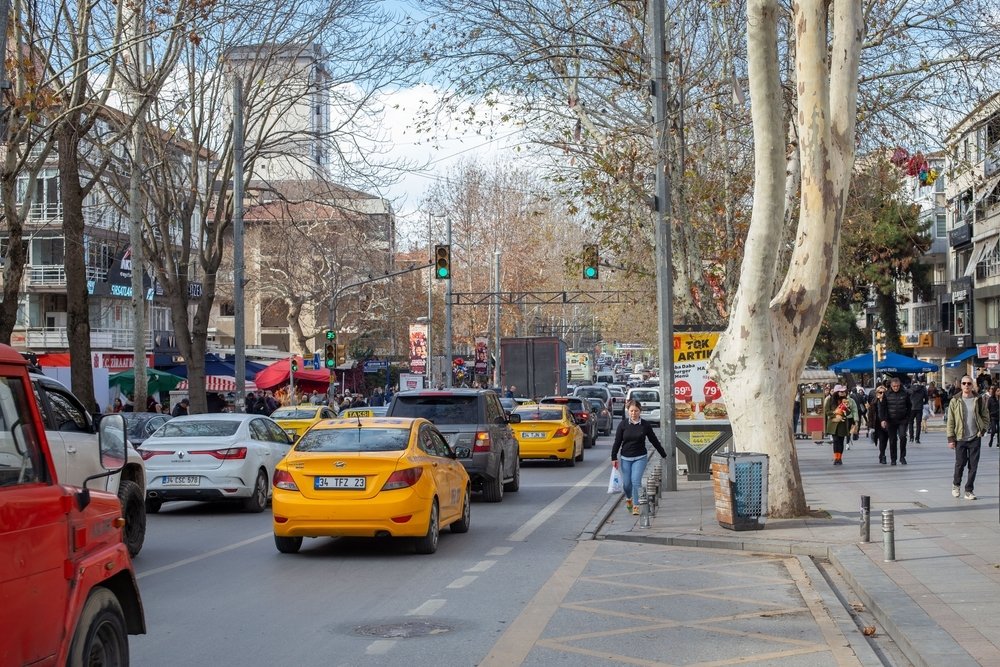With the increase in pedestrian traffic and a particularly strong offering of local brands, three high streets in Istanbul continued to stand out with high occupancy in 2024, according to a research report shared this month by real estate brokerage Cushman & Wakefield TR International.
The report titled “Istanbul High Streets” in its 11th edition analyzed three streets and areas of Istanbul, considering topics such as occupancy rates, footfall count and presence of international brands, among others.
Covering bustling Istiklal Street, Bağdat Street in the city’s Anatolian side and the chic upscale neighborhood of Nışantaşı, the report pointed out diverse dynamics considering pedestrian count and number of occupied stores for example.
While Istiklal Street retained its status as the city’s “busiest high street,” the limited supply and high occupancy rates on the street have led to a notable slowdown in leasing activity, the report said.
Moreover, while the increase in overall pedestrian traffic of cultural attraction centers and the prominence of local brands drew attention, the number of vacant stores on the streets continued to decrease. While the majority of transactions were new leases, 24% of the stores that were in urban transformation the previous year, and 34% of vacant stores were leased in 2024.
“In 2023, of the 58 stores under urban redevelopment, 14 (24%) were leased in 2024. Additionally, of the 32 stores that were vacant in 2023, 11 (34%) have now been leased,” it noted.
While the number of new lease transactions decreased on Istiklal and in Nişantaşı, it surged in Bağdat Street. “On Bağdat Street, despite limited availability, demand continued to rise, reflecting the street’s ongoing appeal,” Cushman & Wakefield TR International said.
“As in the previous year, Bağdat Street recorded the highest share of foreign brands, at 21%. It was followed by the Nişantaşı District at 17%, and Taksim Street at 15%,” the report said.

In the introductory part of the report, the brokerage revealed details of the streets covered in its research. It explained that Nişantaşı comprises four main streets – Rumeli, Teşvikiye, Vali Konağı and Abdi Ipekçi – stretching 2.7 kilometers (1.68 miles) in total.
In contrast, it referred to Istiklal Street, located on Istanbul’s European side, as “a 1.4-kilometer pedestrianized high street and the city’s most iconic shopping destination.”
“On the Asian side, Bağdat Street spans 2.6 kilometers and stands out as the city’s longest high street. Located in one of the highest-income areas, it hosts a broad mix of national and international brands, including luxury and multi-level retail stores,” it said of one of the most popular outing streets on the city’s Asian side, which hosts dozens of domestic and foreign luxury brands, including Pandora and Sephora for instance.
In Bağdat Street, where urban transformation efforts have increased in recent years, the number of stores in the study decreased from 335 to 329, while 324 stores were occupied. The number of empty stores decreased from seven to five, the report said.
In the Nişantaşı area, the number of stores decreased from 374 to 370. While 352 stores were occupied, the number of empty stores increased from 14 to 18.
Istiklal reclaims dominance
At the same time, the report revealed that the average footfall has increased in Istiklal Street and Nişantaşı, while a decline has been observed on Bağdat Street. It also said that local brands continue to maintain their dominance, accounting for 82% of total stores.
Considering the number of visitors, Istiklal Street retained the crown, while a decrease in monthly foot traffic of 2.6 million led to Bağdat Street being visited by some 31.4 million last year.
“Istiklal Street once again ranked as the most visited high street in 2024. Weekday footfall rose by 2% to reach 207,000, while weekend numbers increased by 7% to 313,500. With a monthly average of 7.5 million visitors and an annual total of 90.1 million, the street continues to serve as the epicenter of metropolitan tourism,” the report suggested.
“In 2024, Bagdat Street saw a decline in footfall due to renovation works led by the Istanbul Metropolitan Municipality and ongoing urban redevelopment along the street,” it added.
Lastly, the Nişantaşı area experienced a significant increase in footfall in 2024 compared to the previous year, according to the brokerage.
“Estimated weekday footfall remained nearly unchanged at around 78,000, while weekend footfall surged by approximately 59%, reaching 153,000. The district recorded an average monthly footfall of 3.01 million and an estimated annual total of 36.2 million visitors,” it said.


